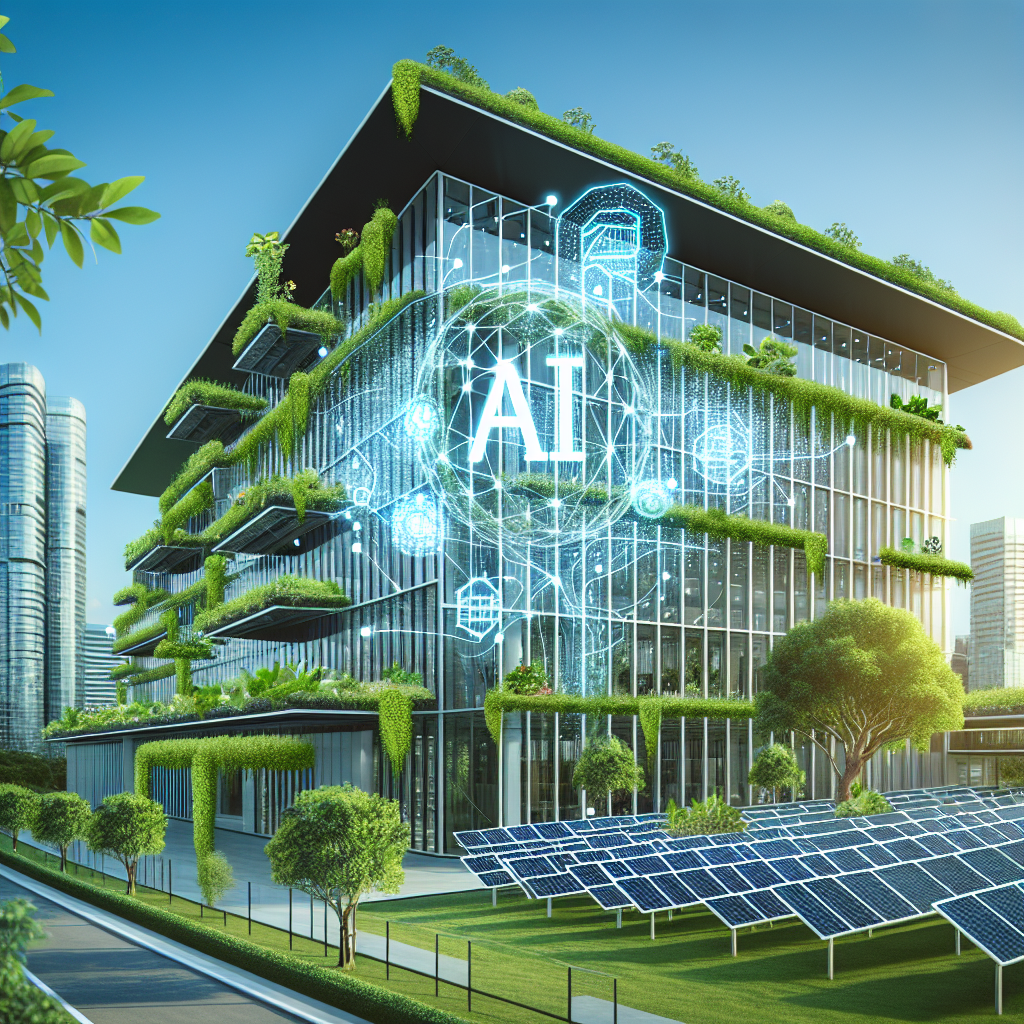With the increasing focus on sustainability and environmental conservation, green building practices have become increasingly important in the construction industry. Green buildings are designed to reduce the negative impact on the environment and promote the health and well-being of occupants. One of the ways that green building practices are being advanced is through the integration of artificial intelligence (AI) technology.
AI is revolutionizing the way buildings are designed, constructed, and operated, with the potential to significantly increase energy efficiency and reduce carbon emissions. By leveraging AI technology, green buildings can optimize energy usage, enhance occupant comfort, and minimize environmental impact.
AI can be used in various ways to create sustainable infrastructure in green buildings. One of the key applications of AI in green building is in energy management. AI algorithms can analyze and predict energy usage patterns in buildings, allowing for more efficient control of heating, cooling, lighting, and other systems. This can result in significant energy savings and reduced carbon emissions.
AI can also be used to optimize building design and layout for maximum energy efficiency. By analyzing data on building performance, occupancy patterns, and environmental conditions, AI can help architects and engineers design buildings that are more sustainable and environmentally friendly. This can include features such as passive solar design, natural ventilation, and energy-efficient lighting systems.
In addition, AI can be used to monitor and control building systems in real-time, making adjustments to optimize energy usage and occupant comfort. For example, AI-powered sensors can detect occupancy levels in different areas of a building and adjust heating and cooling systems accordingly. This can help reduce energy waste and improve overall building performance.
Furthermore, AI can be used to enhance indoor air quality in green buildings. By analyzing data on air quality, humidity levels, and other factors, AI systems can optimize ventilation and filtration systems to maintain a healthy indoor environment. This can improve occupant health and well-being while reducing the building’s environmental impact.
Overall, the integration of AI technology in green building practices has the potential to significantly improve sustainability and reduce the carbon footprint of the built environment. By leveraging AI for energy management, building design, system optimization, and indoor air quality, green buildings can achieve higher levels of performance and efficiency.
Frequently Asked Questions:
1. How does AI technology improve energy efficiency in green buildings?
AI algorithms can analyze and predict energy usage patterns in buildings, allowing for more efficient control of heating, cooling, lighting, and other systems. This can result in significant energy savings and reduced carbon emissions.
2. What are some examples of AI applications in green building design?
AI can be used to optimize building design and layout for maximum energy efficiency. By analyzing data on building performance, occupancy patterns, and environmental conditions, AI can help architects and engineers design buildings that are more sustainable and environmentally friendly.
3. How does AI technology enhance indoor air quality in green buildings?
AI systems can optimize ventilation and filtration systems to maintain a healthy indoor environment by analyzing data on air quality, humidity levels, and other factors. This can improve occupant health and well-being while reducing the building’s environmental impact.
4. What are the benefits of integrating AI technology in green building practices?
The integration of AI technology in green building practices can significantly improve sustainability, reduce the carbon footprint of the built environment, and enhance energy efficiency, occupant comfort, and indoor air quality.
5. How can AI be used to monitor and control building systems in real-time?
AI-powered sensors can detect occupancy levels in different areas of a building and adjust heating and cooling systems accordingly in real-time. This can help reduce energy waste and improve overall building performance.

